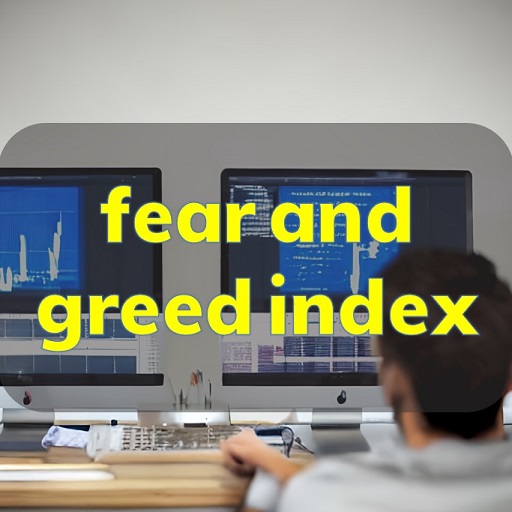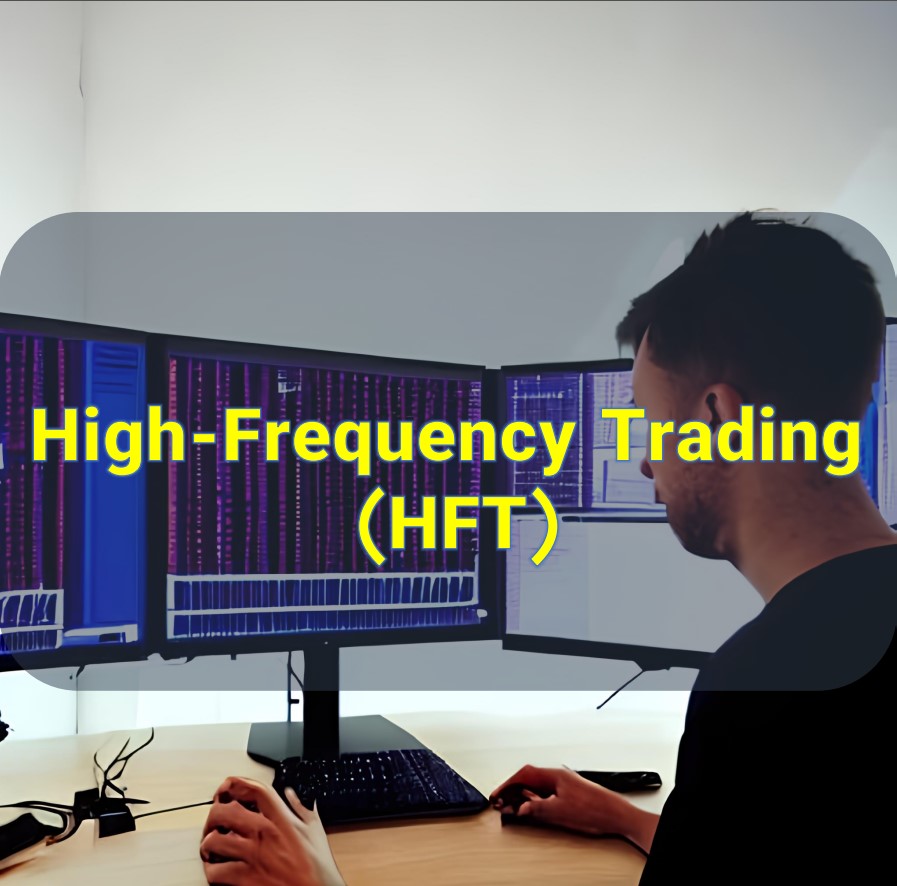The Fear and Greed Index is a popular sentiment indicator used in financial markets to gauge the overall sentiment and mood of investors. It attempts to capture the emotions of fear and greed, which can often drive market behavior.
The Fear and Greed Index takes into account various factors and indicators to calculate a numerical value that represents the level of fear or greed in the market. The factors considered may include stock market performance, volatility, options activity, investor surveys, and other market-related data.
Typically, a high reading on the Fear and Greed Index, such as 80 or above, suggests that investors are exhibiting extreme greed, indicating a potentially overbought market and an increased likelihood of a market correction or reversal. Conversely, a low reading, such as 20 or below, indicates extreme fear among investors, which could signal an oversold market and the potential for a market rally.
It’s important to note that the Fear and Greed Index is just one tool among many that investors use to assess market sentiment. It should not be solely relied upon for making investment decisions but can serve as a supplementary piece of information when evaluating market conditions.
what is FUD?
FUD is an acronym that stands for Fear, Uncertainty, and Doubt. It is a term commonly used in the context of marketing, public relations, and information warfare. FUD refers to the dissemination of negative or misleading information about a particular product, service, or idea with the intention of creating fear, uncertainty, and doubt in the minds of the target audience.
FUD is often employed as a tactic to undermine competitors, sway public opinion, or discourage people from adopting a particular technology or idea. It can involve spreading rumors, exaggerating risks or shortcomings, highlighting uncertainties, or casting doubt on the credibility or reliability of a product or concept.
The objective of FUD is to manipulate perception and influence decision-making by exploiting people’s natural inclination to avoid risks and uncertainties. By creating doubt and instilling fear, those spreading FUD hope to discourage others from embracing a competitor’s product or adopting a new technology, thereby protecting their own interests or maintaining the status quo.
It’s important to approach information critically, especially in situations where FUD may be employed, and to seek out reliable and unbiased sources to make informed judgments.
Fear Of Missing Out
Fear of Missing Out (FOMO) is a psychological term used to describe the feeling of anxiety or unease that arises from the belief that others might be experiencing enjoyable or rewarding opportunities or events from which one is absent. FOMO is commonly associated with the desire to be constantly connected and involved in social activities, especially in the age of social media.
In the context of social media, FOMO often arises when individuals see posts, photos, or updates from their peers engaging in exciting experiences, such as parties, vacations, or significant events. This can lead to feelings of insecurity, envy, and the fear of being left out or not living up to the same level of excitement or success.
FOMO can also extend beyond social activities and manifest in various areas of life, including career, personal achievements, or investment opportunities. It can drive individuals to make impulsive decisions or engage in behaviors they may not genuinely desire, solely to avoid the feeling of missing out on potential opportunities or experiences.
FOMO is a powerful emotional trigger that can influence decision-making, often leading individuals to participate in activities or investments without careful consideration or evaluation. It’s important to recognize and manage FOMO by being mindful of personal values, priorities, and the potential consequences of impulsive actions. Taking a step back, evaluating decisions objectively, and focusing on one’s own goals and well-being can help mitigate the negative impact of FOMO.
The purpose of using the fear and greed index
The Fear and Greed Index is a sentiment indicator that can be used by investors and traders to assess the prevailing sentiment in financial markets. While it is not a definitive measure, it can provide insights into the overall market sentiment and help inform investment decisions. Here are a few purposes of using the Fear and Greed Index:
Market Timing
The Fear and Greed Index can be used to gauge potential turning points in the market. When the index reaches extreme levels of fear or greed, it may indicate a potential reversal or correction in the market. Investors can use this information to adjust their investment strategies, such as considering taking profits or looking for buying opportunities.
Contrarian Investing
The Fear and Greed Index can serve as a contrarian indicator. When the index reaches extreme levels of fear, it may suggest that the market is oversold and may present buying opportunities. Conversely, when the index reaches extreme levels of greed, it may indicate that the market is overbought and due for a pullback, signaling a time to be cautious or consider taking profits.
Risk Management
Monitoring the Fear and Greed Index can help investors assess the overall risk appetite in the market. During periods of extreme greed, investors may need to exercise caution and manage risk more closely, as it may be a sign of excessive market optimism and potential market exuberance. Conversely, during periods of extreme fear, investors may need to consider the potential opportunities that arise from market pessimism and adjust their risk exposure accordingly.
Psychological Insights
The Fear and Greed Index can provide insights into the emotions and sentiments that drive market behavior. Understanding the prevailing sentiment can help investors better navigate market dynamics and avoid being swayed solely by emotions or market noise.
It’s important to note that while the Fear and Greed Index can provide valuable information, it should not be the sole basis for making investment decisions. It’s crucial to combine the index with other fundamental and technical analysis tools, as well as individual research and judgment, to make informed investment choices.
an example of fear and greed index in financial markets
One example of a Fear and Greed Index in financial markets is the CNN Money Fear & Greed Index. It is a widely recognized sentiment indicator that measures the emotions of fear and greed in the U.S. stock market.
The CNN Money Fear & Greed Index combines seven different indicators to calculate a single value on a scale of 0 to 100, where higher values indicate greed and lower values indicate fear. The indicators used in this index include stock price momentum, market volatility (VIX), put and call options activity, breadth (the number of stocks advancing versus declining), junk bond demand, safe-haven demand (measured by the yield spread between junk bonds and U.S. Treasuries), and market momentum.
For example, a high reading on the Fear & Greed Index, such as 90 or above, could indicate extreme greed among investors. This may suggest that the market is overbought and potentially due for a correction or pullback. On the other hand, a low reading, such as 20 or below, may indicate extreme fear, suggesting that the market is oversold and could present buying opportunities.
The Fear & Greed Index is updated daily and provides a snapshot of the overall sentiment in the U.S. stock market. However, it is important to note that this is just one indicator among many, and it should be used in conjunction with other tools and analysis techniques to make well-informed investment decisions.
Benefits of fear and greed index
The Fear and Greed Index can offer several benefits to investors and traders in financial markets. Here are some key advantages of using the Fear and Greed Index:
Market Sentiment Analysis
The Fear and Greed Index provides a quantitative measure of market sentiment. It helps investors gauge the prevailing emotions of fear and greed among market participants. By understanding sentiment, investors can gain insights into market psychology and better evaluate the overall market environment.
Contrarian Investing Opportunities
The Fear and Greed Index can be a valuable tool for contrarian investors. Extreme readings on the index, such as high levels of greed or fear, can indicate potential market reversals or turning points. Contrarian investors can use this information to take positions that go against prevailing sentiment, seeking opportunities to buy when others are overly pessimistic or sell when others are overly optimistic.
Timing Market Entries and Exits
The Fear and Greed Index can help with timing market entries and exits. By monitoring the index, investors can assess whether the market is overheated or oversold. This information can be useful for deciding when to enter or exit positions, potentially avoiding buying at market peaks or selling at market bottoms.
Risk Management
The Fear and Greed Index can assist with risk management. When the index reaches extreme levels of greed, it may indicate increased market risk, suggesting the need for caution and potentially reducing exposure to high-risk assets. Conversely, when the index shows extreme fear, it may present opportunities to increase risk exposure, as it could indicate oversold conditions and potential market rebounds.
Supplementing Investment Decision-Making
The Fear and Greed Index is a supplementary tool that can be used alongside other fundamental and technical analysis techniques. It provides an additional perspective on market sentiment, allowing investors to make more informed decisions by considering both quantitative and qualitative factors.
It’s important to remember that while the Fear and Greed Index can provide valuable insights, it should not be the sole basis for making investment decisions. It should be used in combination with other analysis methods and individual research to form a comprehensive view of market conditions and potential opportunities.
Disadvantages of fear and greed
While the Fear and Greed Index can provide valuable insights, it’s important to be aware of its limitations and potential disadvantages. Here are some considerations regarding the drawbacks of relying solely on the Fear and Greed Index:
Subjectivity and Interpretation
The Fear and Greed Index, like any sentiment indicator, relies on the interpretation of data and the subjective analysis of market sentiment. Different individuals may interpret the same data differently, leading to potential biases and varying conclusions. It’s important to consider multiple indicators and analysis methods to form a more comprehensive understanding of market conditions.
Lagging Indicator
The Fear and Greed Index is typically based on historical data and may not provide real-time or up-to-date information about market sentiment. By the time the index reflects extreme fear or greed, the market conditions may have already started to change. This lagging nature of the index can limit its effectiveness for precise market timing.
Lack of Precision
The Fear and Greed Index provides a general measure of sentiment but may not capture the nuances or specific details that can influence market movements. Market sentiment is influenced by a multitude of factors, such as economic data, geopolitical events, corporate earnings, and more. Relying solely on a sentiment indicator may overlook these crucial factors that drive market behavior.
Market Manipulation
Sentiment indicators, including the Fear and Greed Index, can be influenced or manipulated by market participants. Extreme fear or greed levels may be exaggerated or artificially created by specific market players or groups. It’s important to be cautious and consider other objective factors alongside sentiment indicators to validate market conditions.
Lack of Consensus
Different sentiment indicators may provide conflicting signals, making it challenging to rely on a single indicator for decision-making. While the Fear and Greed Index may suggest extreme fear or greed, other sentiment indicators or analysis methods may provide different readings. It’s important to consider a range of indicators and analysis techniques to gain a broader perspective.
Ultimately, the Fear and Greed Index should be used as a tool in conjunction with other forms of analysis and research. It can offer valuable insights into market sentiment, but it should not be the sole determinant of investment decisions. A comprehensive approach that considers multiple factors and indicators will lead to more well-rounded decision-making.







